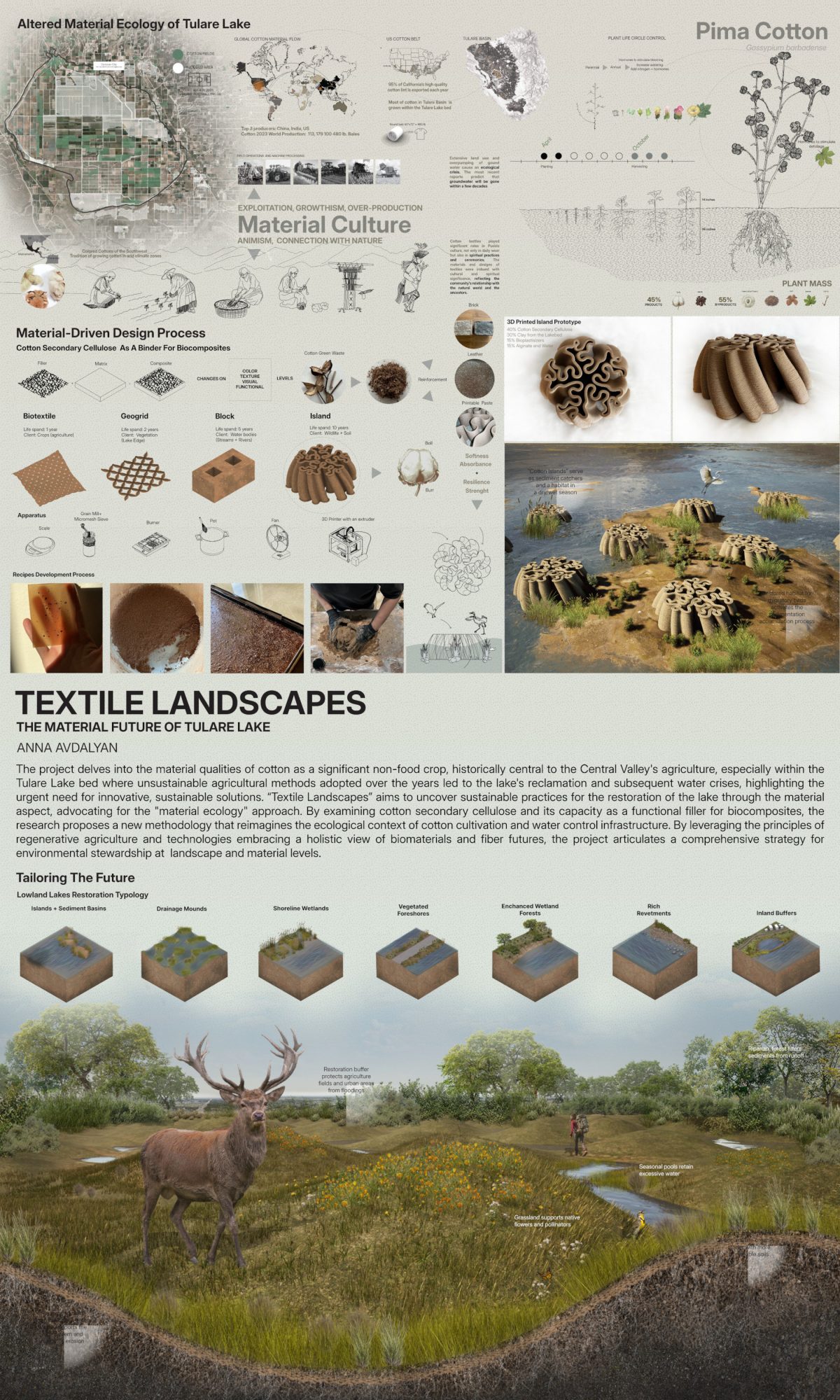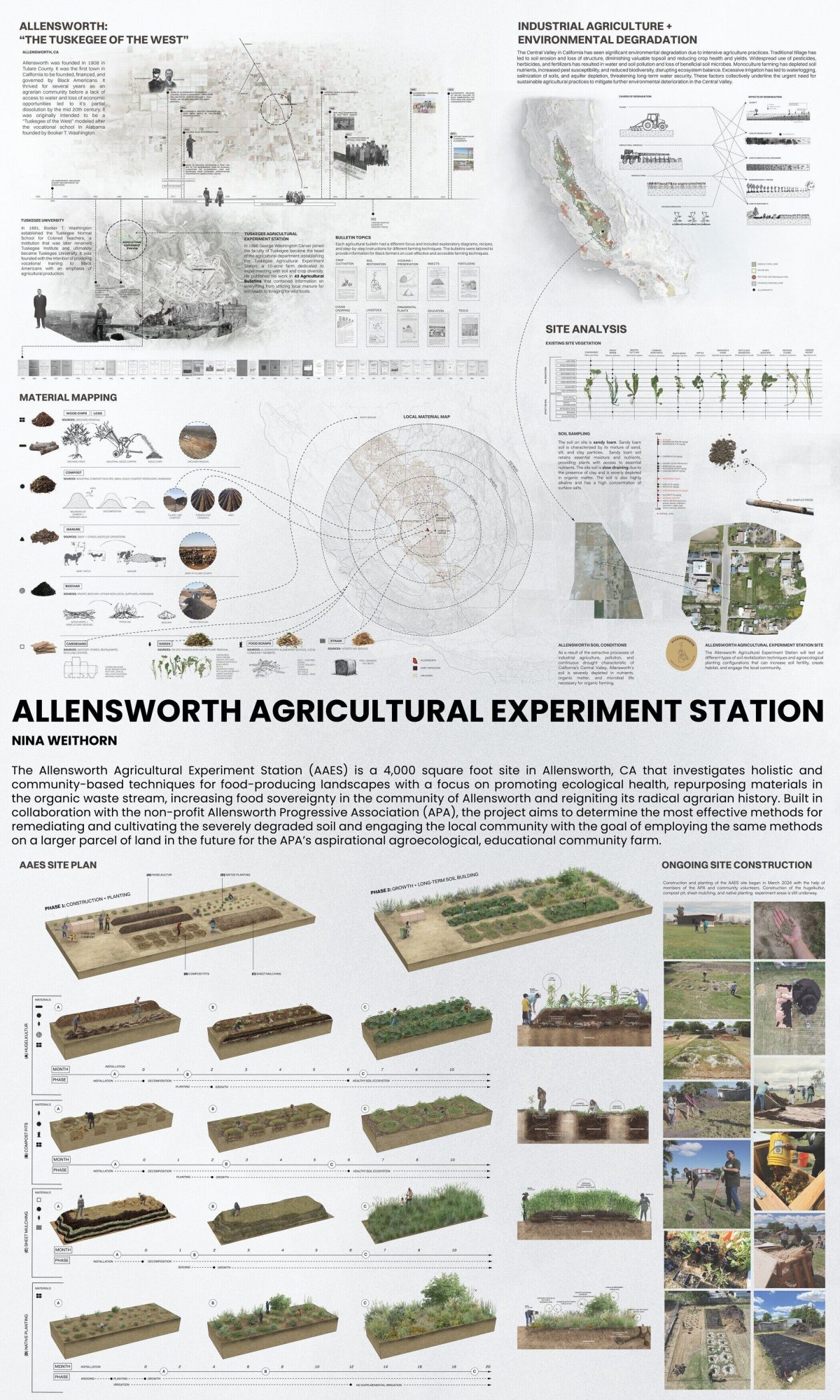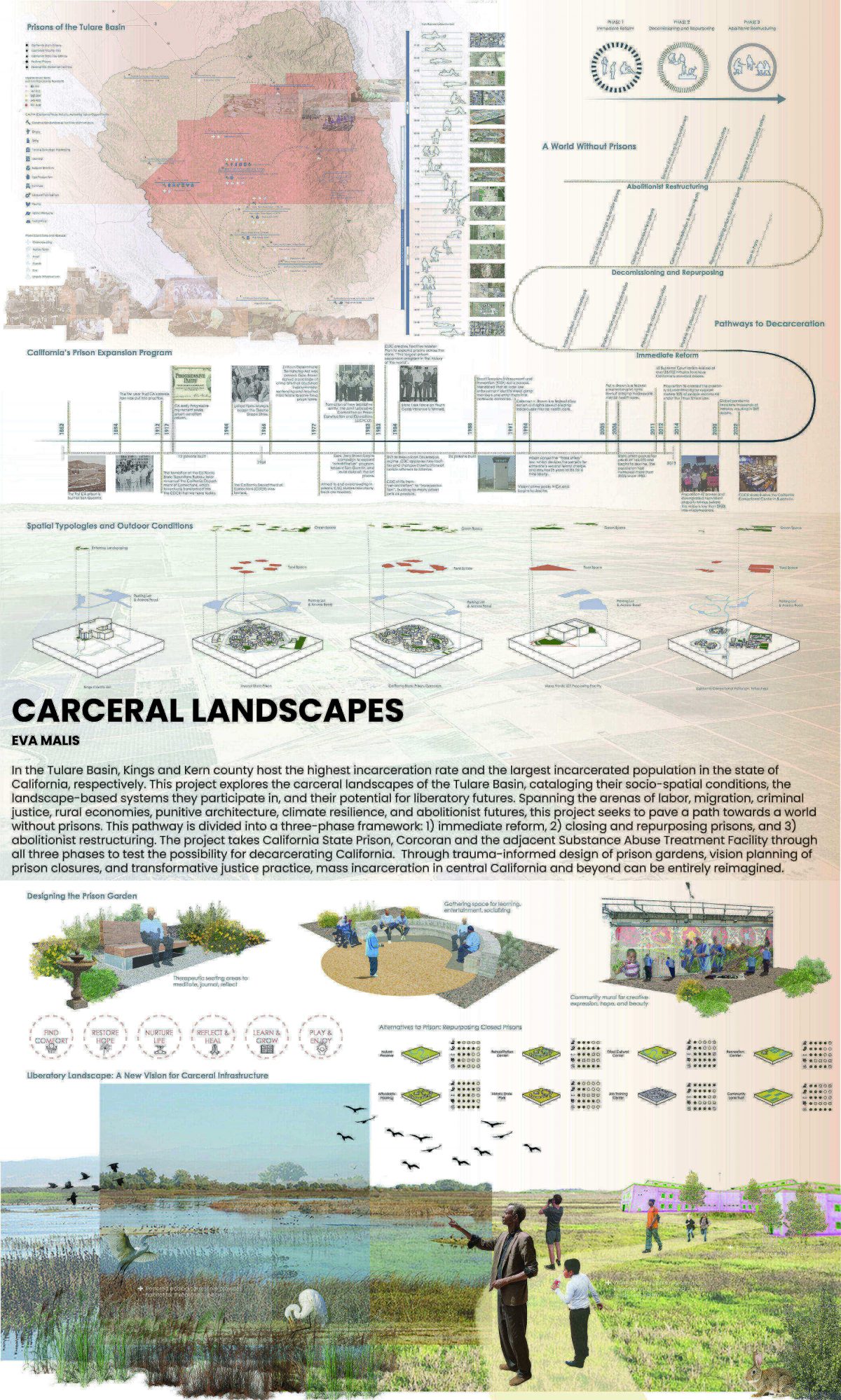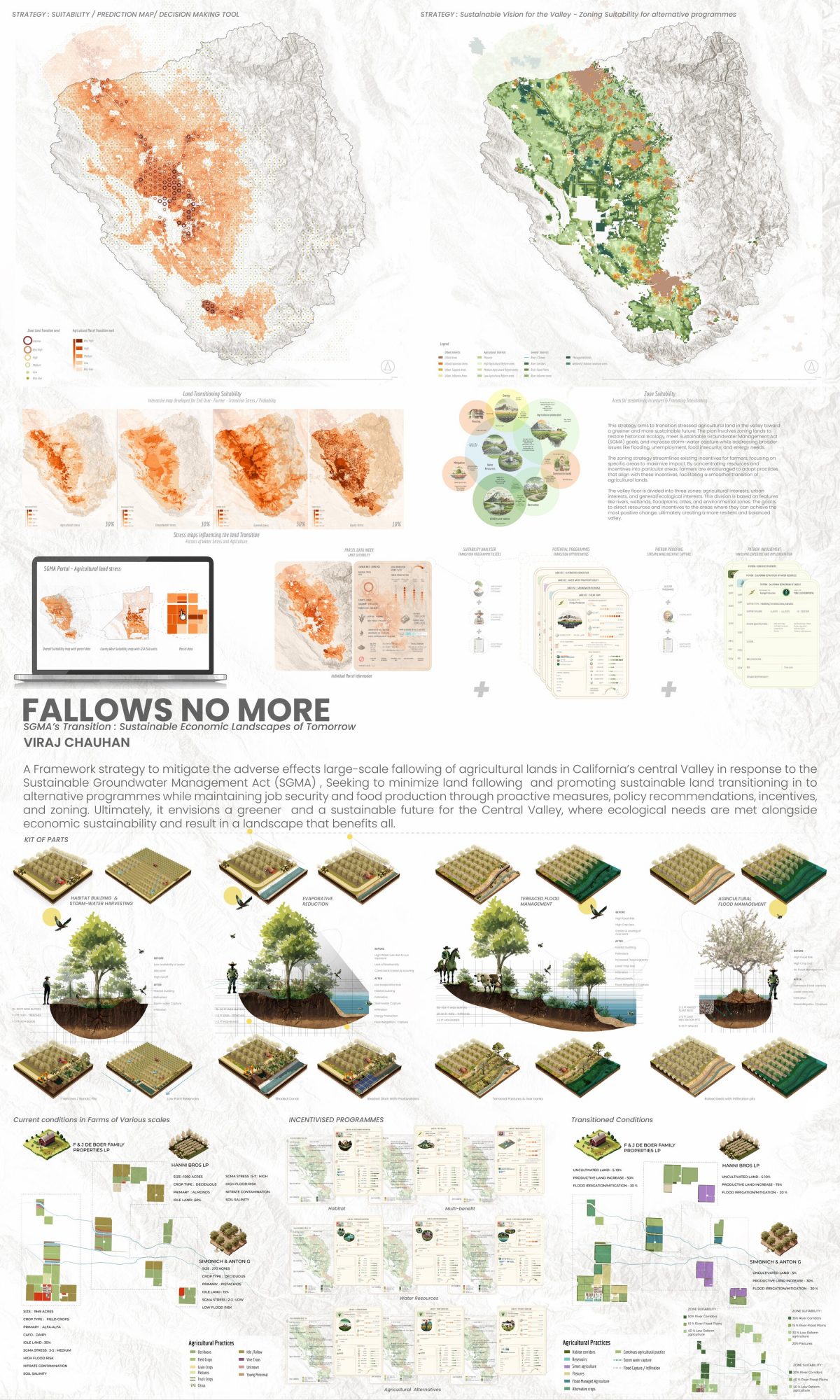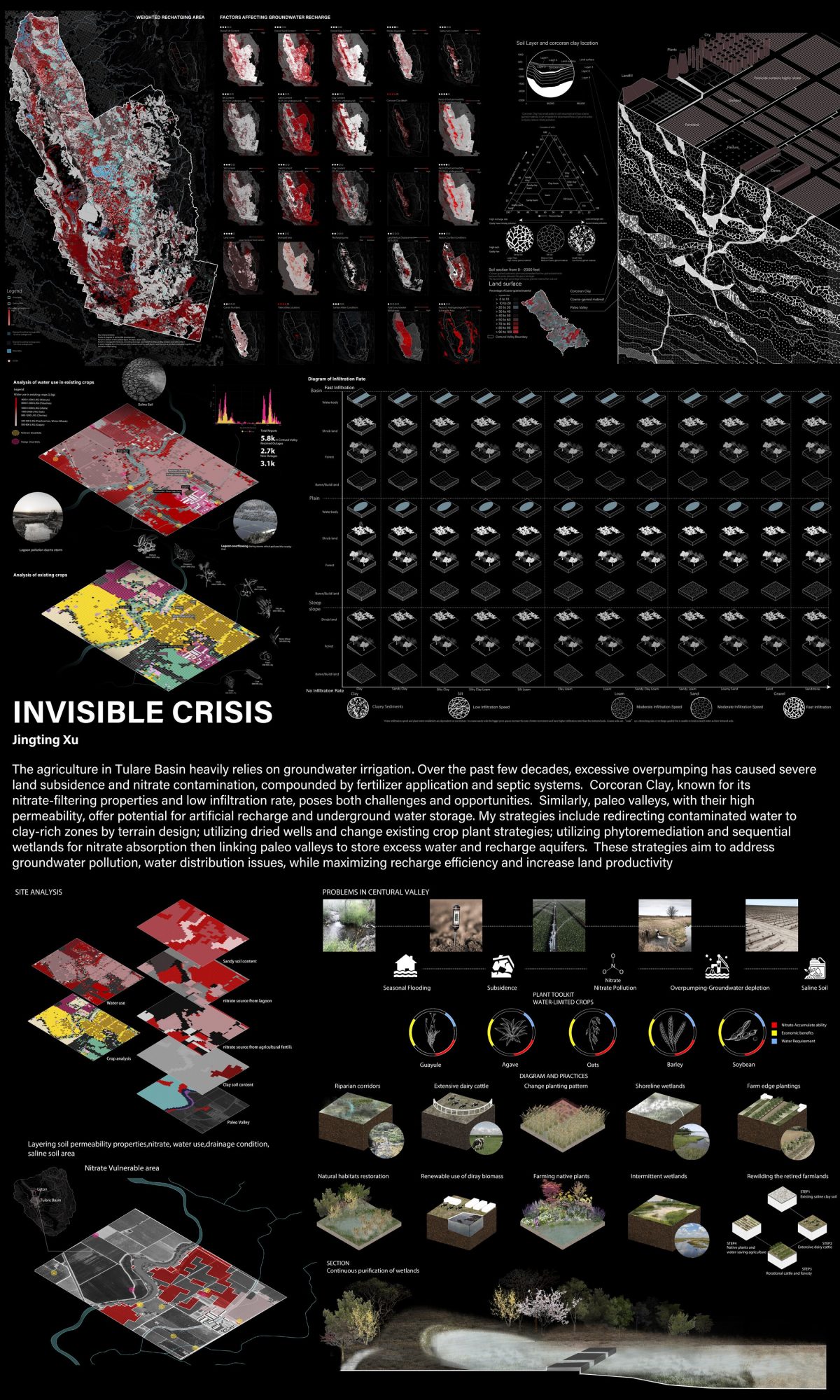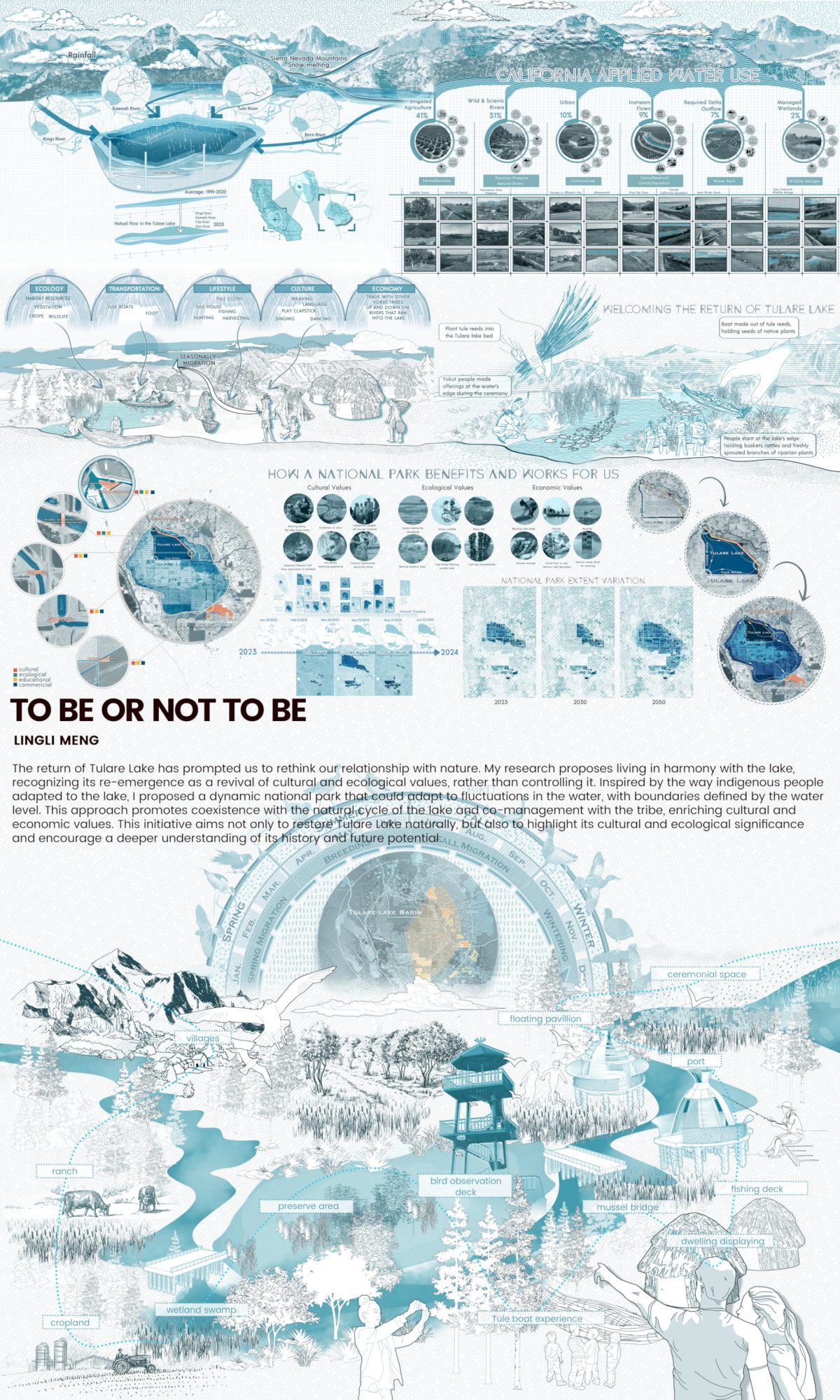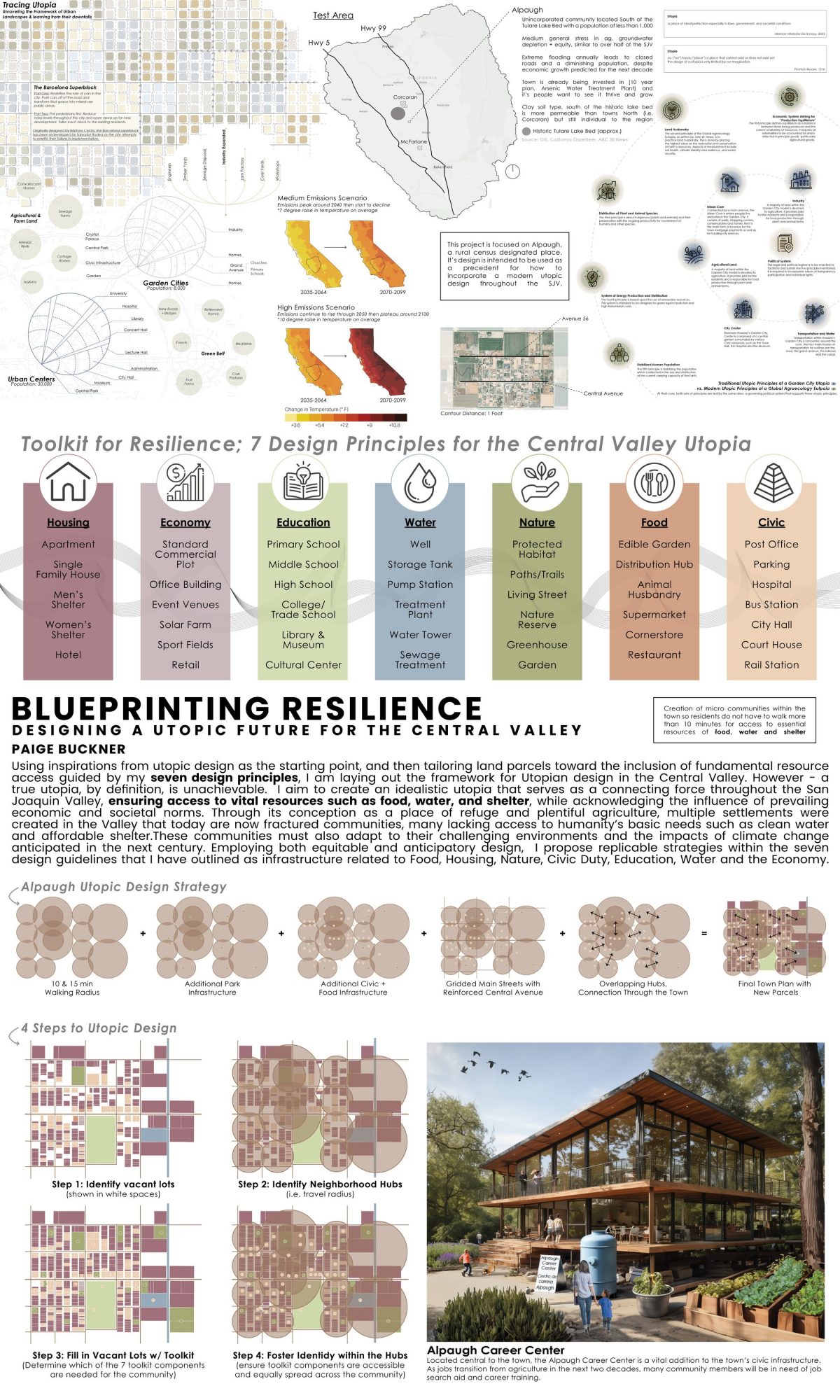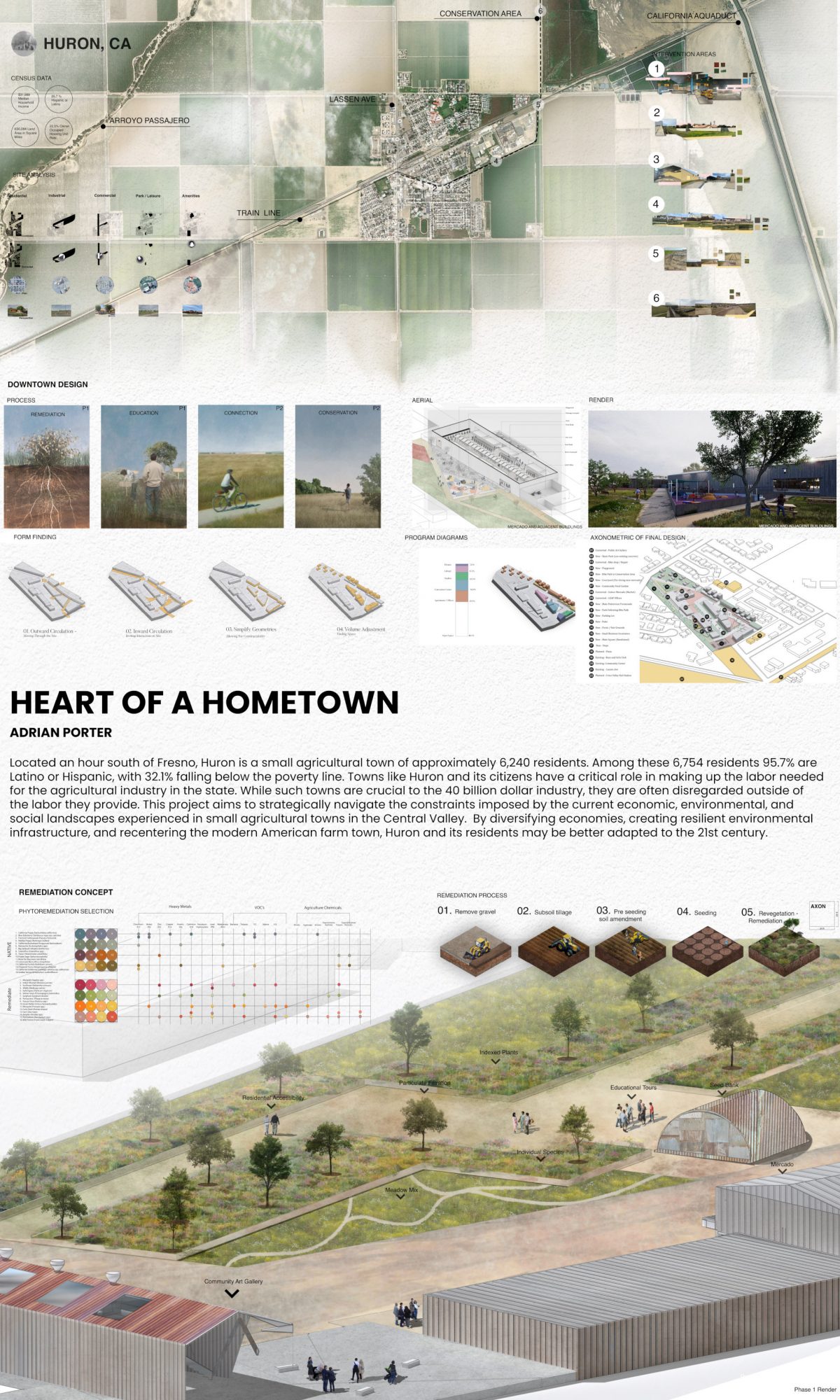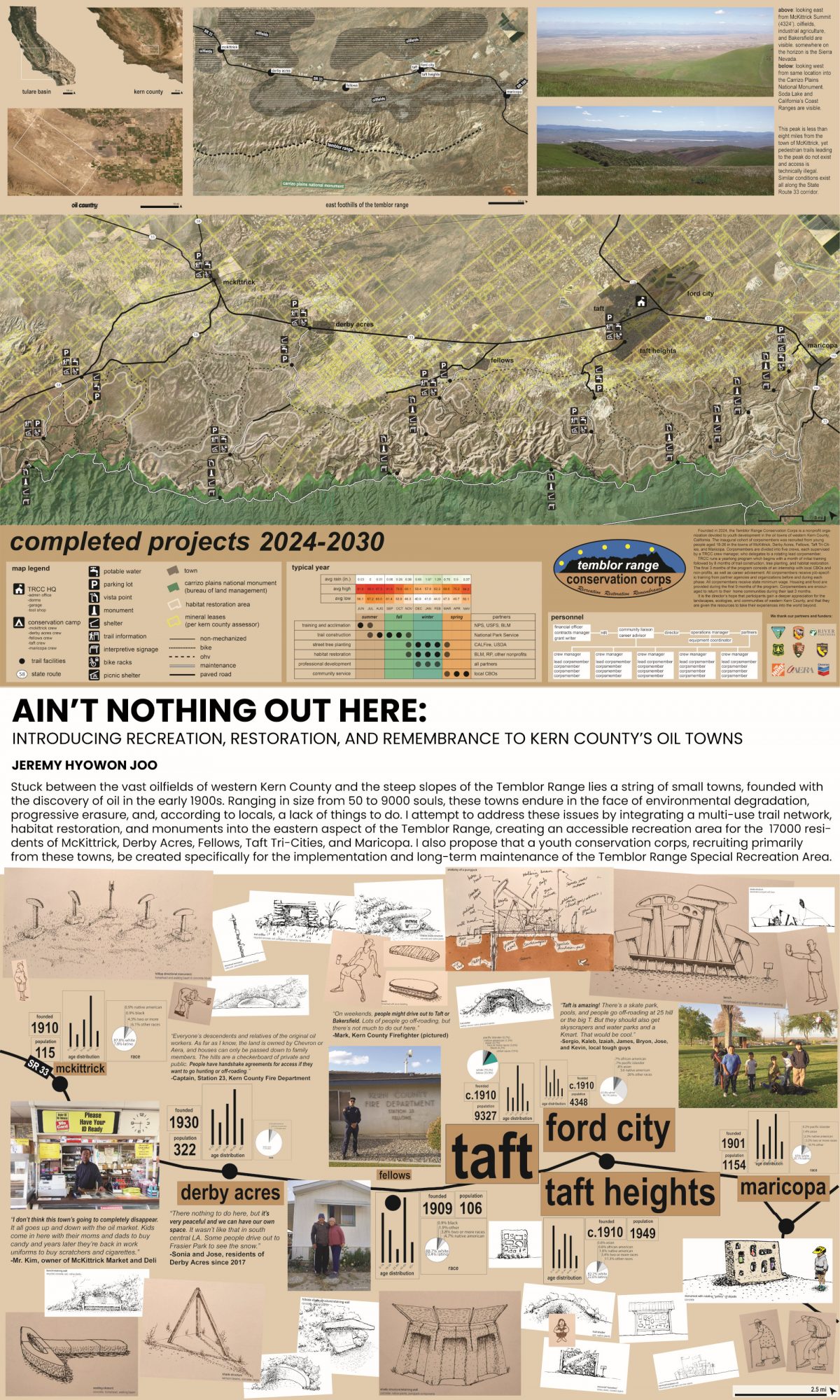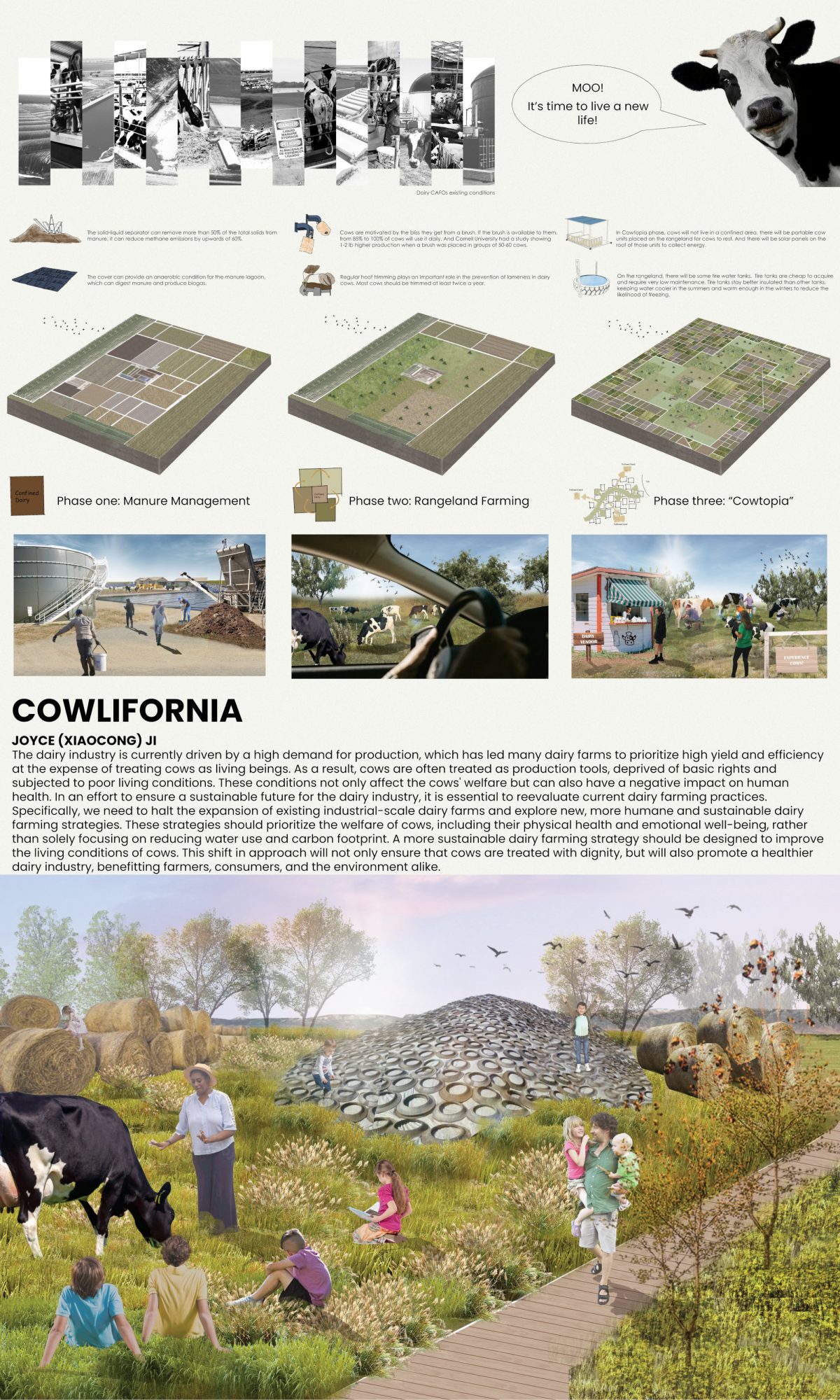The project examines cotton’s material properties as a key non-food crop in the Central Valley, with a historical significance in the Tulare Lake bed’s agriculture. It addresses the environmental impacts of traditional farming and water management, focusing on water dynamics in Tulare Lake during fluctuations and unpredictable rainfall. The research explores sustainable methods to rehabilitate the lake, endorsing a “material ecology” perspective. By studying cotton secondary cellulose as a biocomposite filler, it suggests a novel approach that reevaluates cotton cultivation and water infrastructure in an ecological context. This approach aims to shorten the material supply chain and underscore the viability of sustainable land management. By leveraging the principles of regenerative agriculture and technologies embracing a holistic view of biomaterials and fiber futures, the project articulates a comprehensive strategy for environmental stewardship at landscape and material levels.
